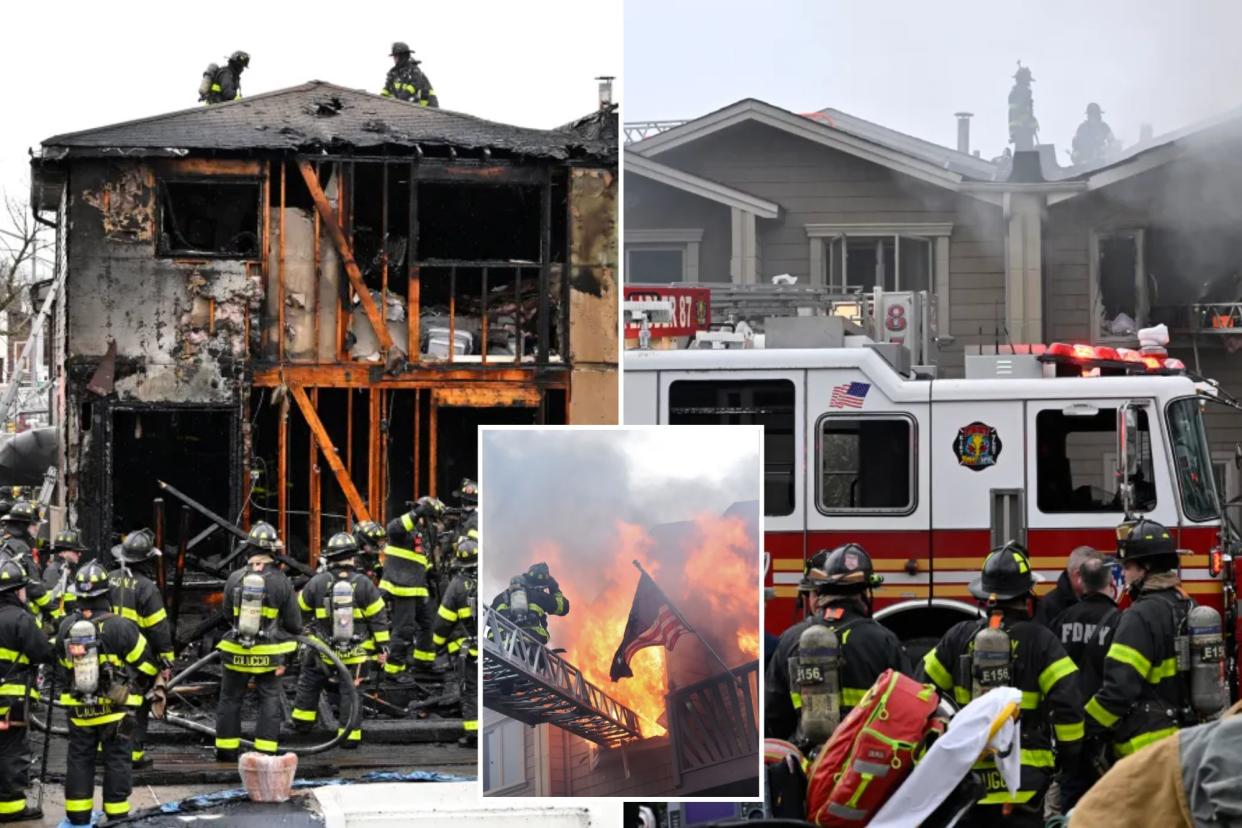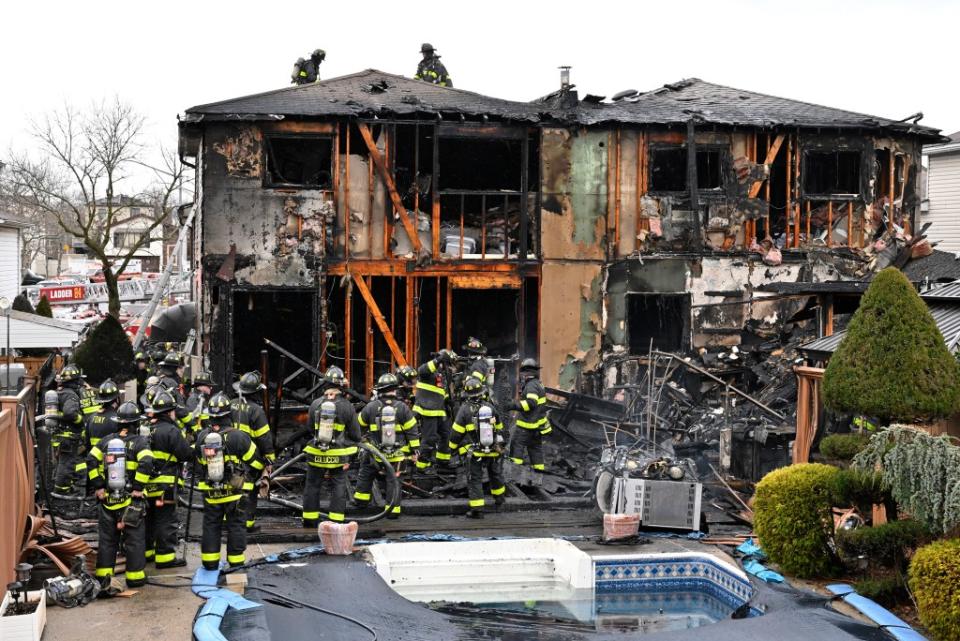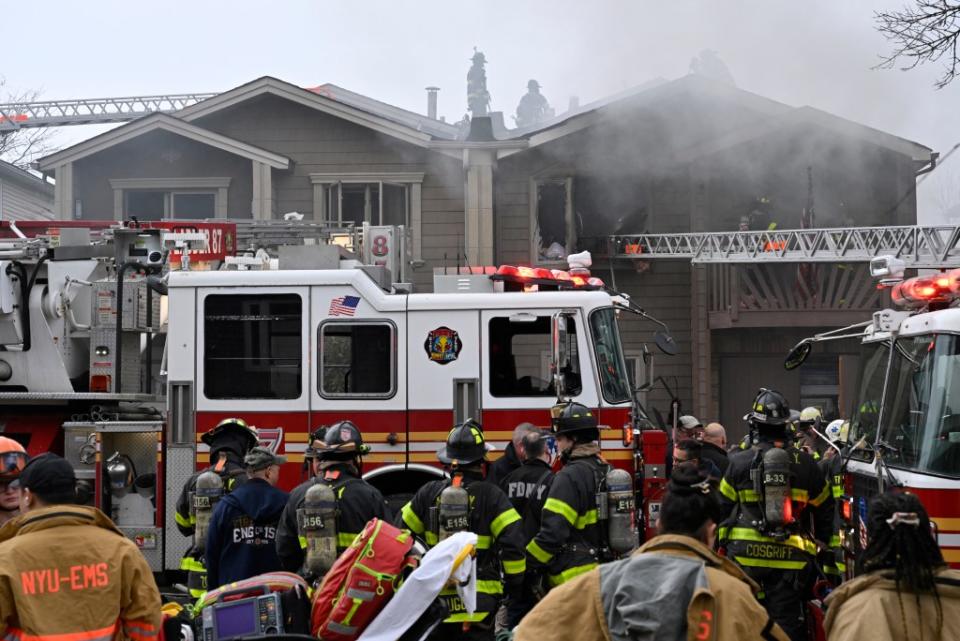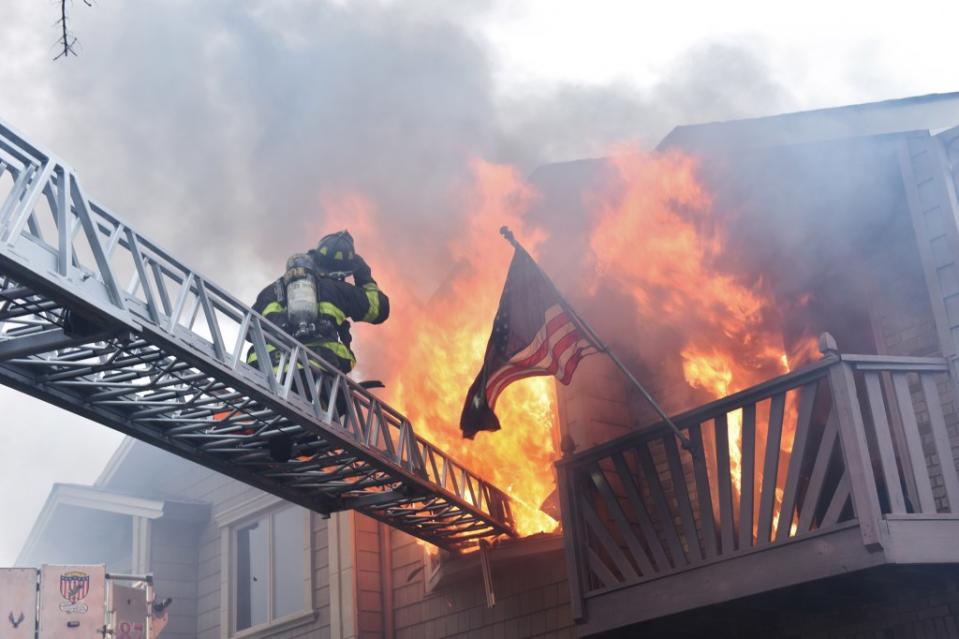Seriously injured FDNY firefighters sue NYC for $80M over ‘closure’ policy they claim endangered their lives

Four Bravest nearly lost their lives in a 2023 blaze because of a city policy that closes firehouses for annual physicals — and the rule continues to pose a threat to residents and responders, new lawsuits charge.
Retired FDNY Lt. Bill Doody and firefighters William Guidera, Kwabena Brentuo and John Sarnes are seeking a total of $80 million — or $20 million a piece — in the negligence suits they filed against the city involving its alleged dangerous decades-old policy and a Feb. 17, 2023 blaze on Staten Island.
The four firefighters were among 22 Bravest injured in the fire at 84 and 88 Shotwell Ave. in the borough’s Annadale section — with Doody so badly burned that his boots melted into his legs, his lawyer said.

The four-alarm blaze began in the back of a semi-detached duplex and quickly spread to the neighboring residence because of heavy winds, leading to a partial collapse of one of the homes that triggered at least two “mayday” calls over firefighters trapped inside, including some of the plaintiffs.
But the closest firehouse, Ladder Company 167, was temporarily shut at the time because firefighters there were undergoing their annual medical exams as per FDNY policy, according to the lawsuits filed in state supreme court on Staten Island.
No firefighters were reassigned from other firehouses to cover them to avoid overtime costs, the suits say.
The lawsuits claim that the policy contributed to a delayed response to the blaze from other fire companies farther away and violates city, state and federal safety, labor and traffic laws.
Making matters worse, a fire engine from Engine 162 was involved in a motor-vehicle accident while responding to the blaze and never even arrived at the site, the suits said.
Andreas Koutsoudakis, a lawyer for the plaintiffs, said it is rare for firefighters to sue the FDNY and the city because they take the job knowing they face personal risk to protect the public and save lives while extinguishing blazes.

But he said that taking a firehouse completely out of service so firefighters can take their physical exams without re-assigning others to provide coverage is “ridiculous” and a “very dangerous” policy that unnecessarily put the lives of residents and first respondents at risk.
The fire trucks from a closed firehouse are also taken out of service for repairs during the temporary closure — which also goes into effect when firefighters take education courses, according to the firefighters union.
“You should never close a firehouse,” said Koutsoudakis, co-founder of the KI Legal Personal Injury firm. “No amount of money saved justifies closing a firehouse.”
He said the policy contributed to a “ripple effect” that turned what could have been manageable one-alarm fire into a major four-alarm inferno.
“No one can say with a straight face that the policy makes sense,” Koutsoudakis said.
The lawsuits call for a preliminary injunction to suspend the closure policy.

Lt. William Doody, who recently retired, suffered from burns so severe battling the fire that his boots melted into his legs, his lawyer said.
Michael Guidera, who jumped out the second floor of the building to save his life, underwent several surgeries for hip and back injuries.
Kwabena Brentuo suffered head injuries and pulmonary/respiratory issues.
John Sarnes also suffered “permanent injuries,” his suit said.
The firehouse closure policy has been a source of contention for some time in labor negotiations, said Andrew Ansbro, president of the Bravest union the New York City Uniformed Firefighters Association.
He noted there are 193 fire engine companies and 143 ladder companies, and on any given day, 10 to 12 firehouses could be closed so firefighters can get physicals or training.
“They’re relying on the firefighters in the other firehouses to pick up the work. A majority of the time it works out,” Ansbro said. “But sometimes you have a fire like the one on Staten Island where … firefighters get hurt.”
The complaints claim that the closure policy caused the driver of Engine 162 to violate traffic laws by driving recklessly.
“William Doody faced unreasonably deteriorating conditions without proper support, and found himself trapped by fire. … Doody faced impending death due to the unreasonably increased risk of harm, and was caused to fall down a flight of stairs to avoid being burned to death,” his lawsuit said.
The suits claim the city violated the federal Occupational Safety and Health laws and regulations, rules of the Public Employee Safety and Health Commission, the National Fire Protection Association, the International Association of Fire Fighters; the U.S Fire Administration, the National Fire Academy and the city’s own Fire Department Rules and Regulations.
Neither the FDNY nor city Law Department immediately responded to Post requests for comment.

 Yahoo News
Yahoo News 
